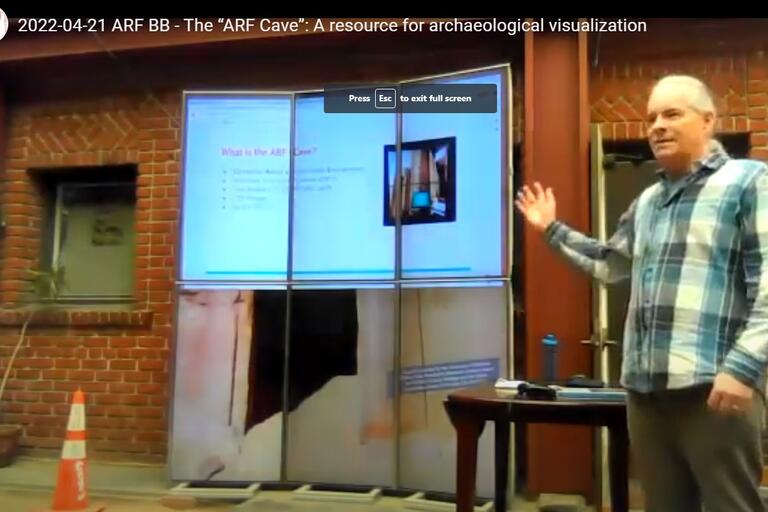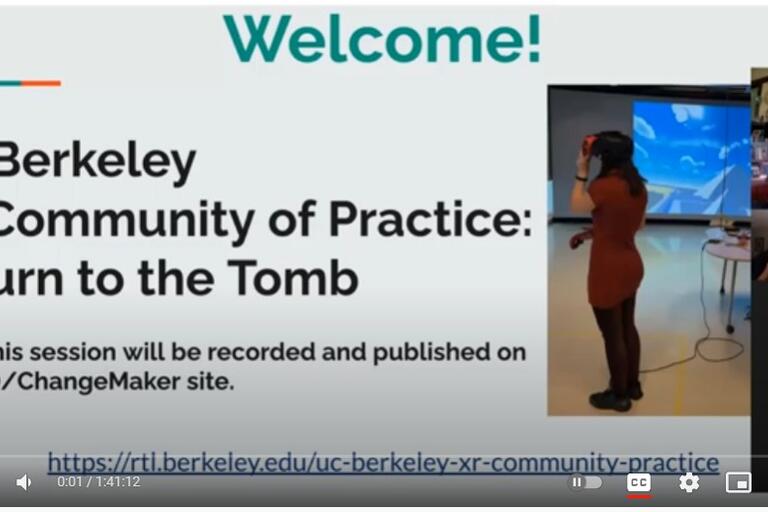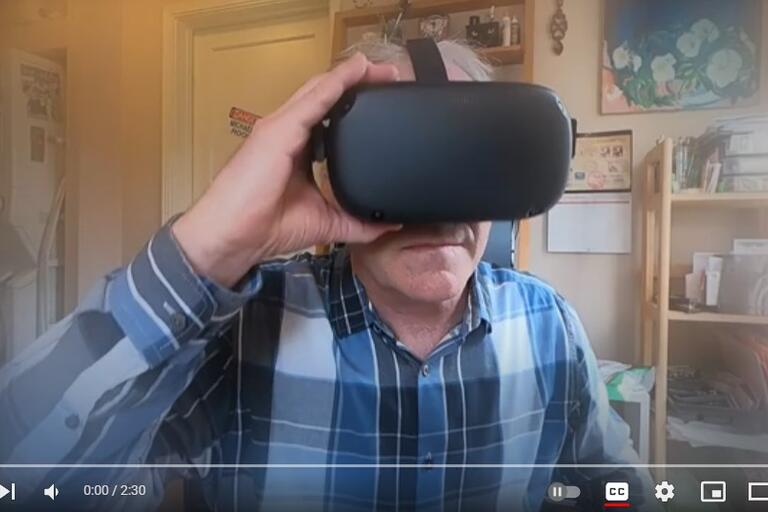[Note: In this site, we use the term Extended Reality (XR) as a convenient shorthand referring collectively to the different modalities Augmented Reality (AR), Virtual Reality (VR), and Mixed Reality (MR). ]
With sponsorship from the Chief Academic Technology Officer, Research, Teaching, and Learning (RTL) has created a community of practice supporting campus community members who are interested in or use Extended Reality (XR) technologies, especially in the realms of research and instruction. Starting with the XR project launches by several awardees of the 2020 Berkeley Changemaker Technology Innovation & Connected Campus Grants, the community of practice will grow to welcome and nurture the broadest possible range of works-in-progress while also promoting emerging practices around accessibility, design, content curation, as well as security and privacy.
As campus departments take up augmented, virtual, and mixed reality tools and applications, important choices and challenges arise in deciding how to approach the planning and design of infrastructure, spaces, and the services to be offered. Another goal of this community of practice is to share best practices based upon early experiences of setting up and growing XR spaces and support. The emerging services, space designs, and choice of technology and training offered are informed both by consideration of the varied XR environments being explored in the curriculum as well as a general interest in supporting XR use by individuals and groups in non-curricular settings. The goals of this community of practice include:
- Highlighting commonalities and differences of augmented, virtual, and mixed reality as they’re being applied to research, teaching, and learning
- Considering service design approaches and decision points around XR technologies
- Noting challenges and solutions for developing accessible and sustainable approaches to XR deployments
With XR’s rich set of enablements, researchers, teachers, and learners have available to them a broad range of new experiential languages and modalities for exploring and visualizing. As campus groups consider how best to deploy XR, opportunities and challenges arise when it comes to planning the training, infrastructure, facilities, hardware, software, content, and staff resources needed. Examining current features of the XR landscape, this community of practice looks at key topic areas including emerging interoperability standards, accessibility, the curation of content, as well as security and privacy.

















